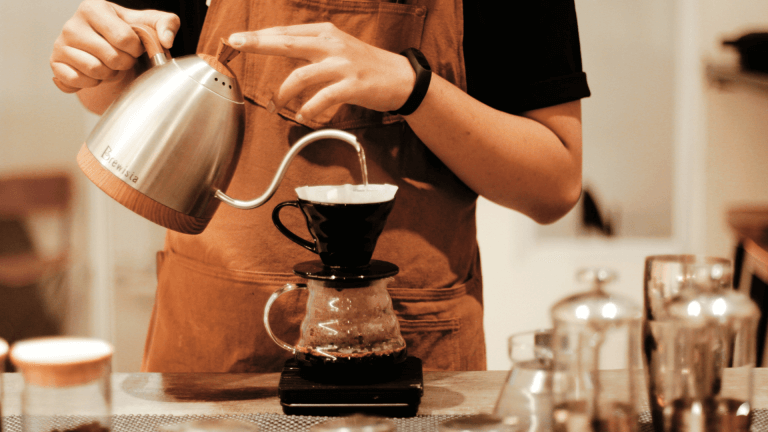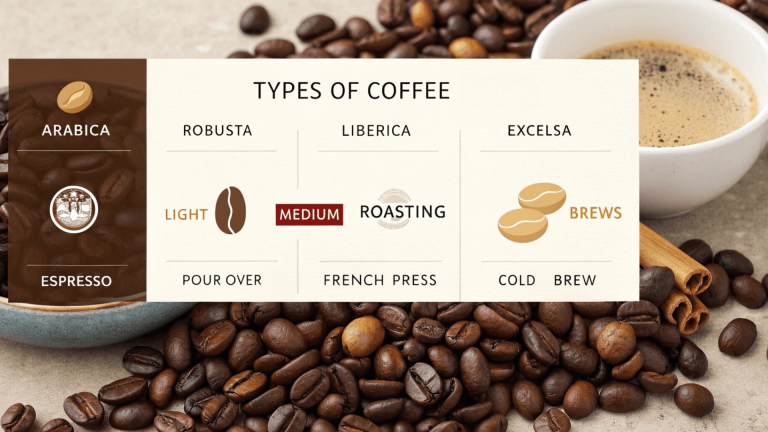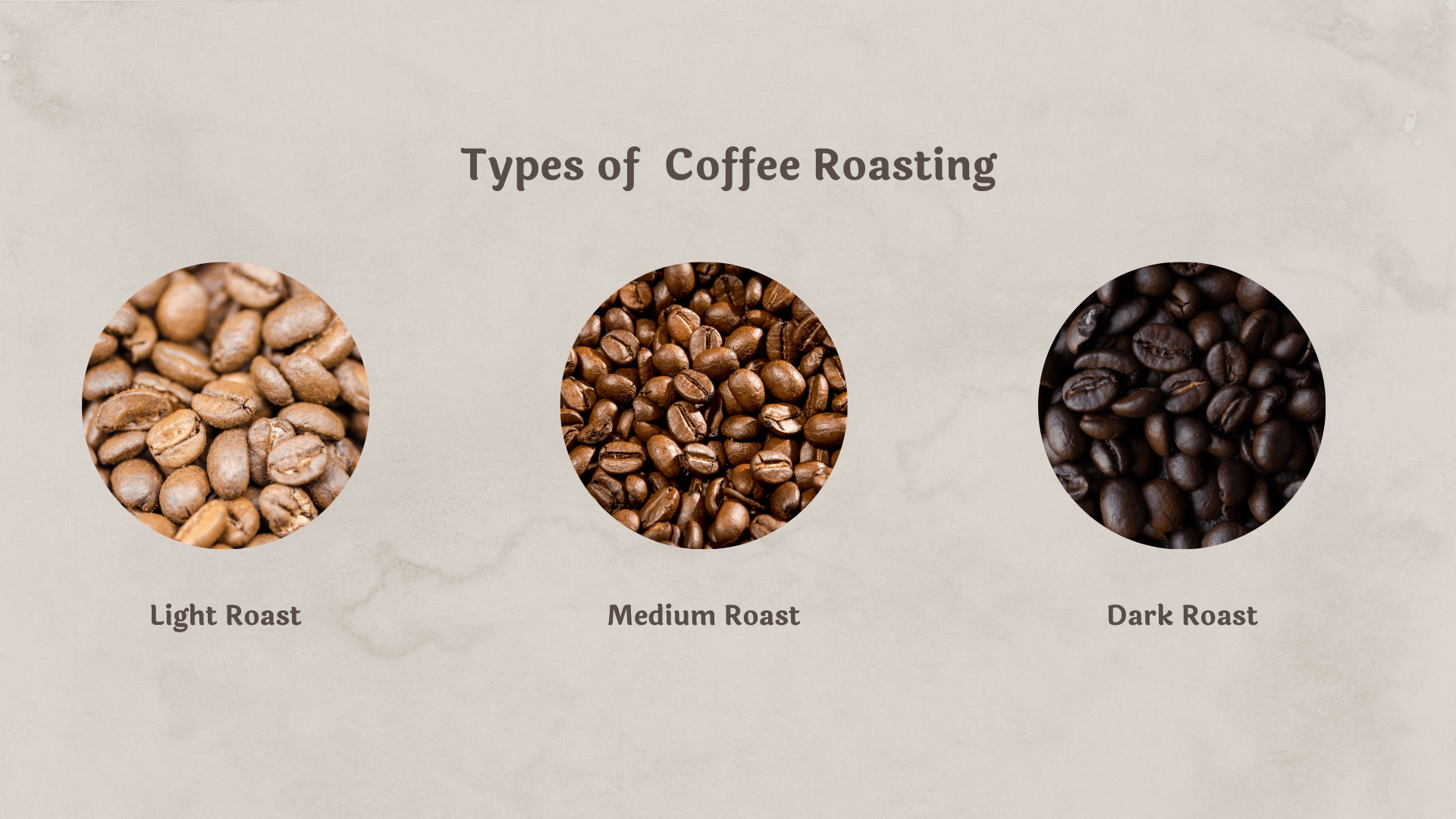
Coffee enthusiasts select light, medium, or dark roasts to tailor each cup’s flavour. This choice may seem insignificant, but it alters the way your coffee tastes, smells, and feels. Knowing these roast levels will make every sip better. You’ll learn which roast best suits you and how Coffee Roast Levels Affect Taste.
What Is Roast Level?
Roast level refers to the duration and temperature at which coffee beans are roasted.
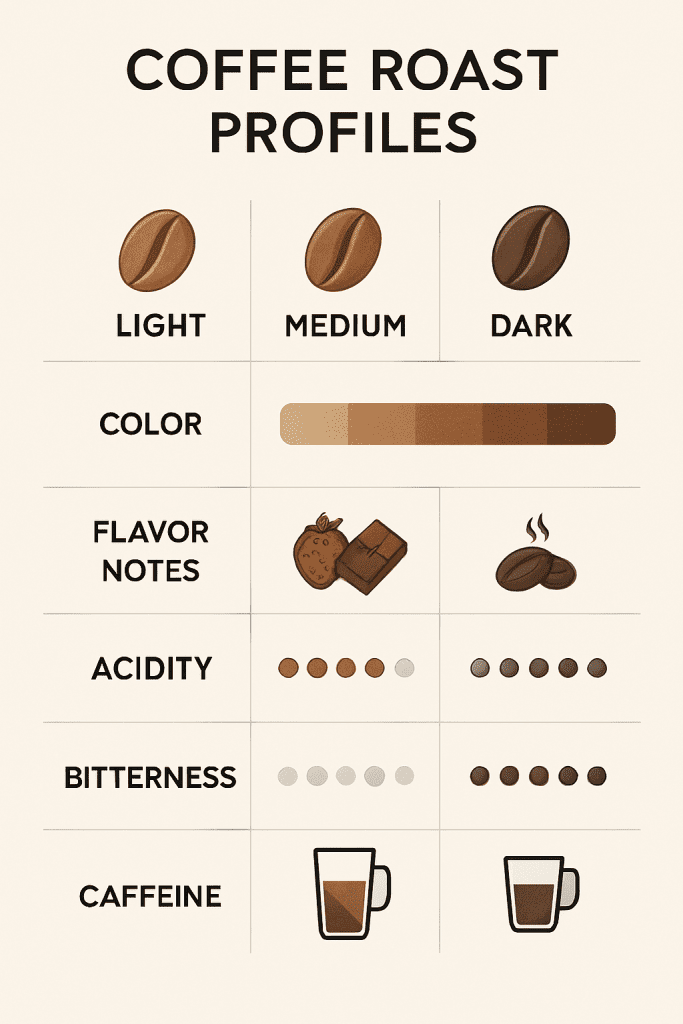
Roast Comparison Profiles
Each level offers its own distinct taste, aroma, and texture.
Why Roast Level Matters
Roasting sparks chemical changes inside beans. These changes shape flavour and aroma.
The roast also controls the body—the weight you feel in your mouth. Light roasts feel thin, almost like tea. Dark roasts feel thick, almost like syrup.
How Roasting Works
Roasting begins when green beans are exposed to hot air or metal inside the roaster. Heat enters the beans. Water inside boils away, sugars break down, and oils form.
- Drying Stage
Beans heat up and lose moisture. - First Crack
Beans pop like popcorn. This marks a light roast. - Maillard Reaction
Sugars and proteins react. They turn brown and create new flavours. - Second Crack
Beans crack again. This marks the start of a dark roast. - Cooling
Roaster stops heating. Beans cool quickly to lock in flavour.
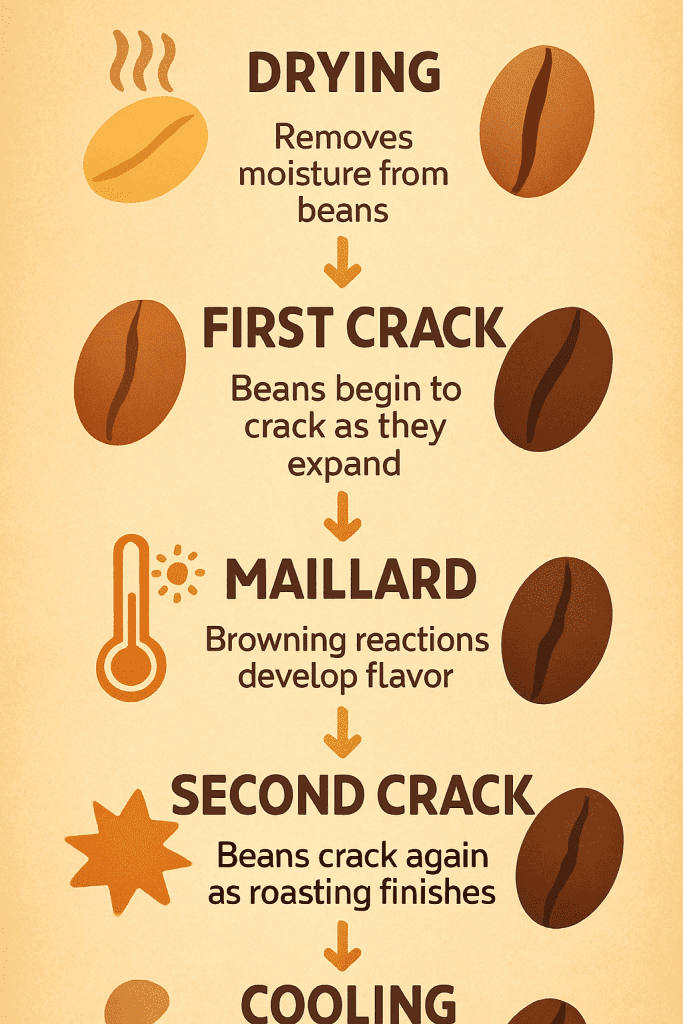
Coffee Roasting Stages
A Brief History of Coffee Roasting
Coffee roasting began centuries ago in Arabia. Early roasters used open fires and metal pans. In the 1800s, drum roasters emerged, enabling greater control. Modern machines use hot air or rotating drums. Today, roasters can dial in precise temps and roast times. This control brings consistency and new flavour profiles to your cup.
Light Roast: Bright and Tangy
Light roasts stop soon after the first crack.
Key Traits:
Why Try Light Roast?
If you love bright, fruity flavours, try a light roast. It shows the bean origin clearly. You may notice hints of tea and bursts of berry. Light roasts are best suited for use with pour-over and drip filter methods.
Medium Roast: Smooth and Balanced
Medium roasts reach just before or right after the second crack.
Key Traits:
Why Try Medium Roast?
Medium roast blends bright acidity with sweet, nutty flavours. It feels smooth and balanced. Many people pick this roast for daily coffee. It matches drip machines, Aeropress, and French press.
Dark Roast: Bold and Deep
Dark roasts continue well into the second crack.
Key Traits:
Why Try Dark Roast?
If you enjoy bold, rich coffee, a dark roast is a good fit. You’ll taste smoky and roasted notes. Dark roasts pair well with milk and sugar. Espresso and stovetop brews often use dark roast.
How Roast Affects Aroma
Aroma is the smell you experience when you sniff ground coffee or inhale steam.
A pleasing aroma can boost your mood and hint at the flavour ahead. Always smell beans before brewing.
How Roast Affectsthe Body
Body is how heavy coffee feels in your mouth.
Body comes from oils and solids released during roasting. Darker beans yield more oils, adding weight.
How to Choose Your Roast
Brewing Variations by Roast
Tips to Brew the Perfect Roast
- Use fresh, clean water free of odours.
- Measure coffee and water by weight for consistency.
- Grind beans just before brewing to preserve aroma.
- Keep the water between 195°F–205°F (90 °C–96°C).
- Adjust brew time:
– Pour-over: 2.5–4 minutes
– French press: 4–5 minutes
– Espresso: 25–30 seconds - Taste and adjust the grind size or time until you achieve your ideal cup.
Storing Roasted Beans
Common Roast Names
Roasters use fun names for roast levels:
The Role of Bean Origin
Roast level is one piece of the puzzle. Bean origin also shapes flavour:
Combine origin and roast to craft your perfect cup.
Why Roast Level Matters for Caffeine
Some believe dark roast has more caffeine. It does not. Roasting level changes bean mass but not total caffeine content. A scoop of dark roast weighs less, so it has slightly more caffeine by volume. A scale yields the most accurate comparison of caffeine.
Eco and Health Notes
Roasting alters antioxidant levels and oils:
Troubleshooting Common Issues
Final Thoughts
Roast level guides your coffee journey. Light, medium, and dark roasts each bring unique traits. Try them all. Notice aroma, flavour, and body. Match roast to your brew method. Store beans well. With each cup, you’ll learn more about your taste. Enjoy the process and savour every sip.
This article uses short sentences and simple words to stay clear and friendly. Happy brewing!

